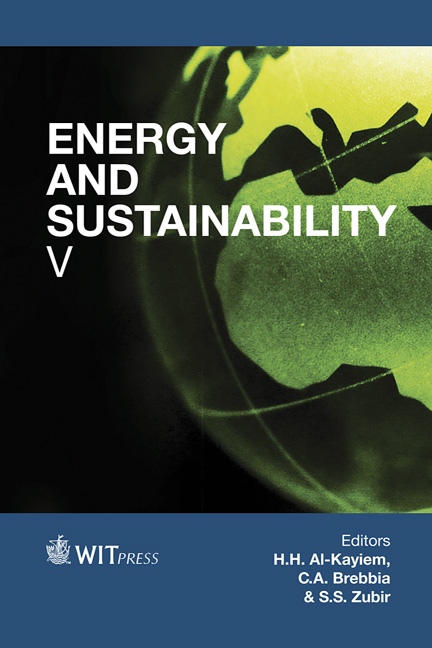Potential Of Palm Biomass As Renewable Energy Source From Data Analysis Of Sua Manggis Palm Oil Mill In Linggi, Negeri Sembilan, Malaysia
Price
Free (open access)
Transaction
Volume
186
Pages
10
Page Range
129 - 138
Published
2015
Size
861 kb
Paper DOI
10.2495/ESUS140111
Copyright
WIT Press
Author(s)
W. J. Ng, A. A. Rahman, S. L. Koh
Abstract
There are various types of renewable energy such as wind, tidal, solar, hydro, geothermal heat, as well as biomass or biogas. One renewable energy resource that has good potential in Malaysia is biomass, which is harvested from agricultural residue. Apart from hydroelectric generators which use water to run, solar energy from sunlight, or wind turbines, which are more popular worldwide. The biomass energy is the most practical way to produce energy because Malaysia has an abundance of natural resources. Malaysia’s governmental energy policy encourages the palm oil industry to be achieving zero waste in palm oil industry and sustainable palm oil residue as biomass energy. Thus, this research project will focus on the potential of biomass energy that can be gained from the biggest producer of biomass in Malaysia – the palm oil industry. Palm oil grows all around Malaysia since the climate is very suitable. As the number of palm oil mills is increasing, so does the biomass resource for green energy. From the analysis data we can define palm oil mill (POM) production as well as potential types of fuel, and the improvements for POM milling process. This research will define the potentials of palm biomass in becoming a green energy producer.
Keywords
palm oil mill (POM), potential energy, fresh fruit bunch (FFB)





